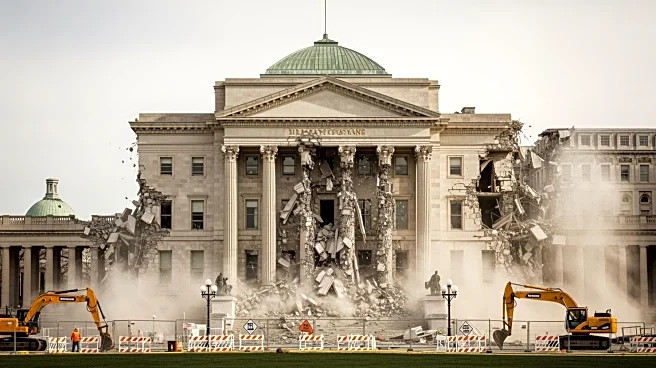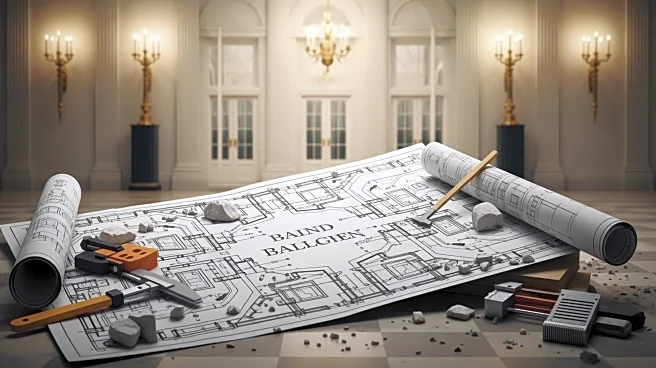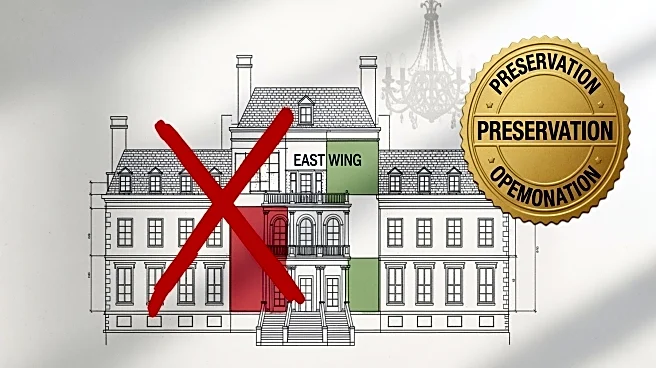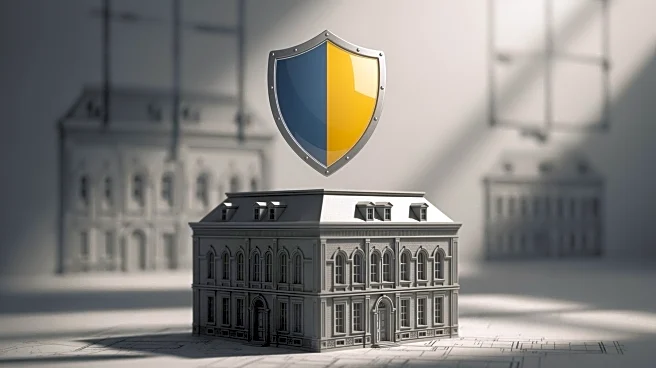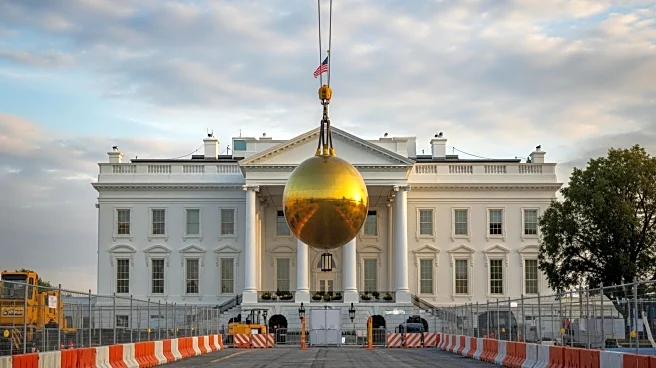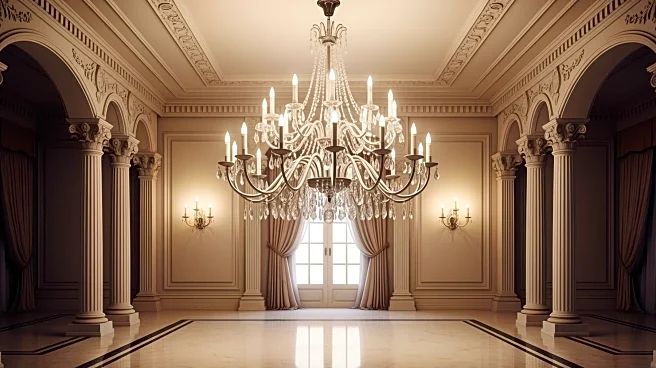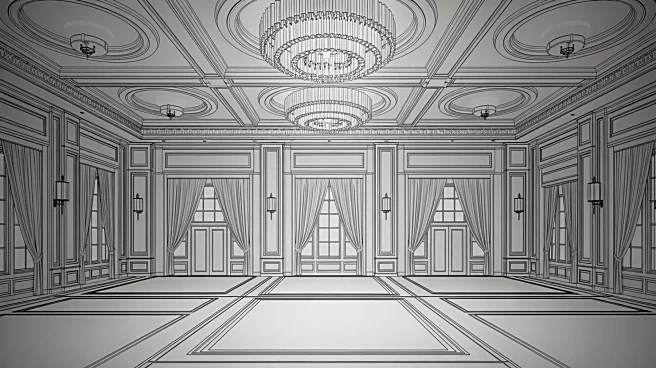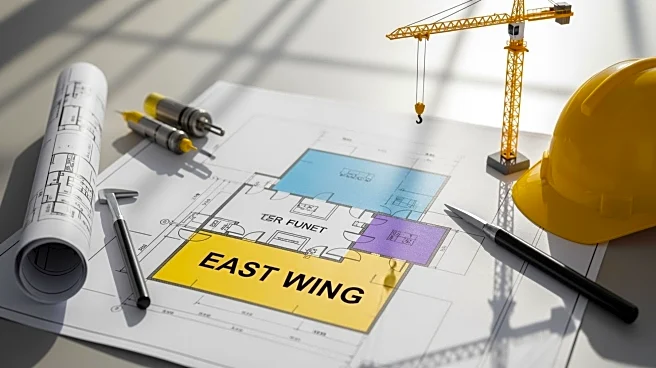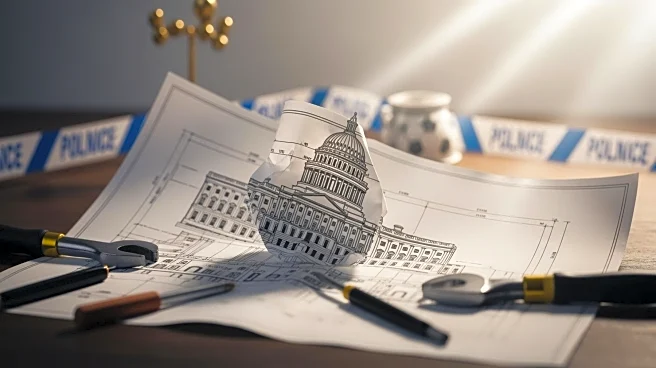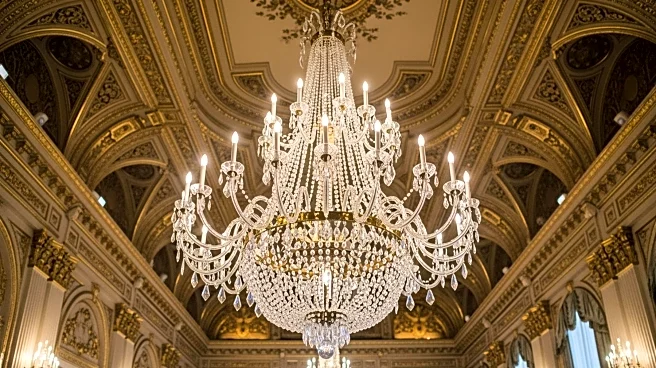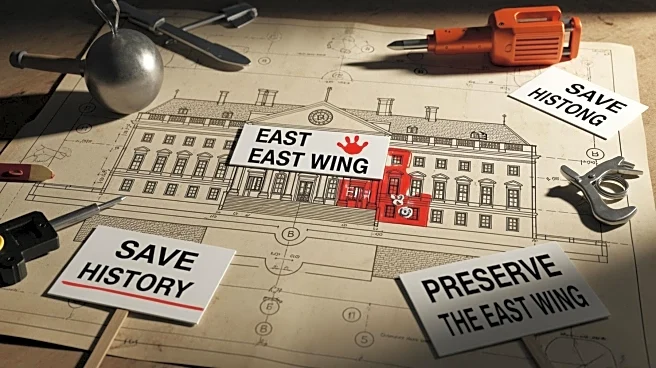What's Happening?
President Trump has overseen the demolition of the East Wing of the White House, a move that has sparked significant controversy. The administration has defended the decision, stating that the East Wing was not a crucial part of the White House. This
action is part of a series of notable decisions during President Trump's second term, including calling off a planned 'surge' in San Francisco and pardoning a cryptocurrency CEO. The demolition has been met with surprise and criticism, as it represents a significant alteration to the historic presidential residence.
Why It's Important?
The demolition of the East Wing is significant as it alters a historic and symbolic part of the U.S. presidency. This decision may impact public perception of President Trump's administration, as it raises questions about the preservation of national heritage and the motivations behind such a drastic change. The move could also influence political discourse, as opponents may use it to criticize the administration's approach to governance and historical preservation. Additionally, the pardon of a crypto CEO and the cancellation of the San Francisco 'surge' reflect the administration's ongoing policy decisions that could have broader implications for regulatory and urban policy.
What's Next?
The demolition of the East Wing may lead to further scrutiny and debate over President Trump's decisions regarding the White House and other policy actions. Stakeholders, including historians, preservationists, and political opponents, may call for more transparency and justification for such significant changes. The administration may need to address these concerns to mitigate potential backlash and maintain public support. Additionally, the implications of the crypto CEO pardon and the halted San Francisco 'surge' may unfold as these decisions impact regulatory and urban policy landscapes.
Beyond the Headlines
The decision to demolish the East Wing could have long-term implications for how future administrations approach the preservation of historical sites. It raises ethical questions about the balance between modernization and historical preservation. This action may set a precedent for future changes to the White House and other national landmarks, potentially influencing cultural and historical preservation policies.
